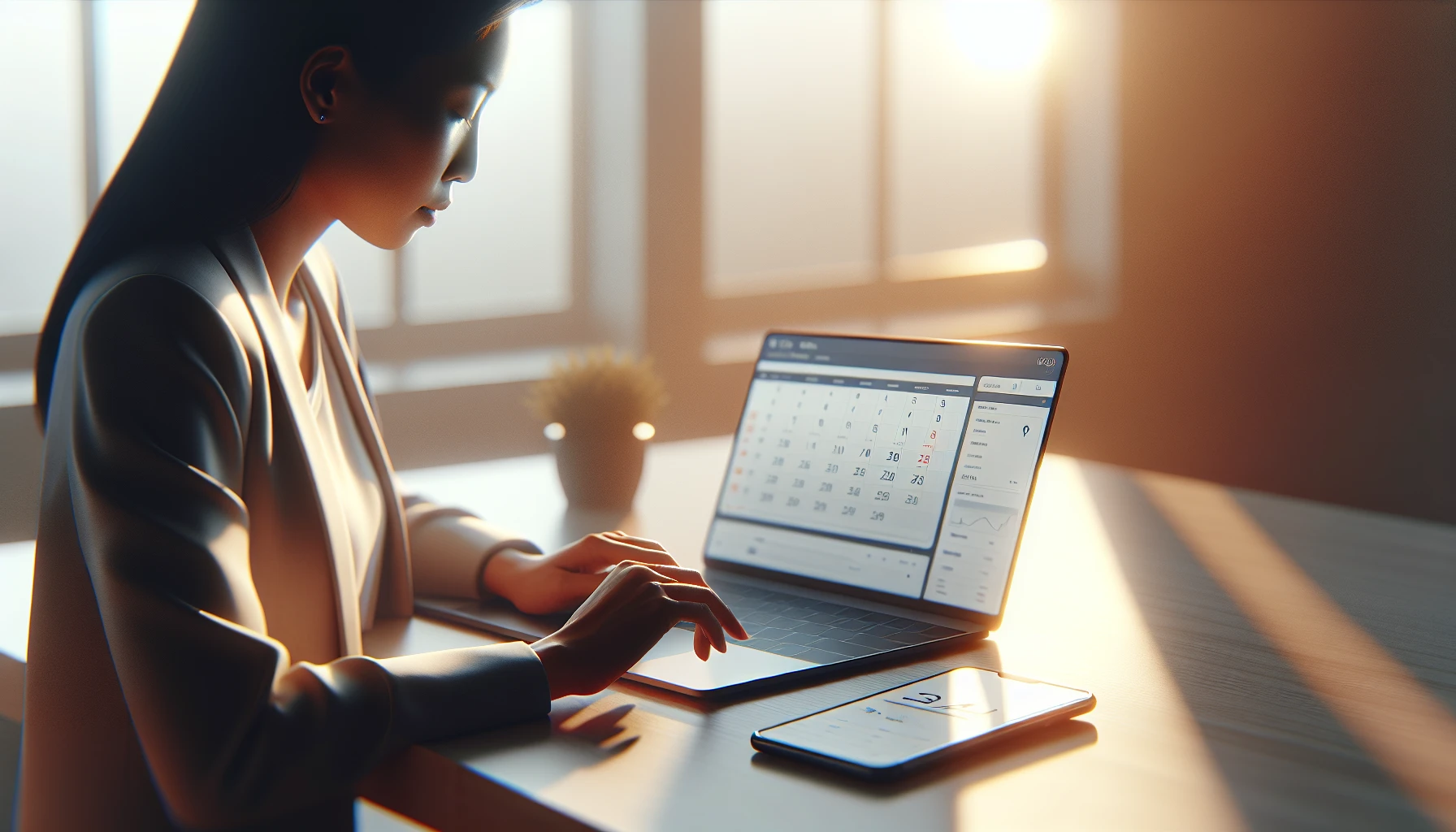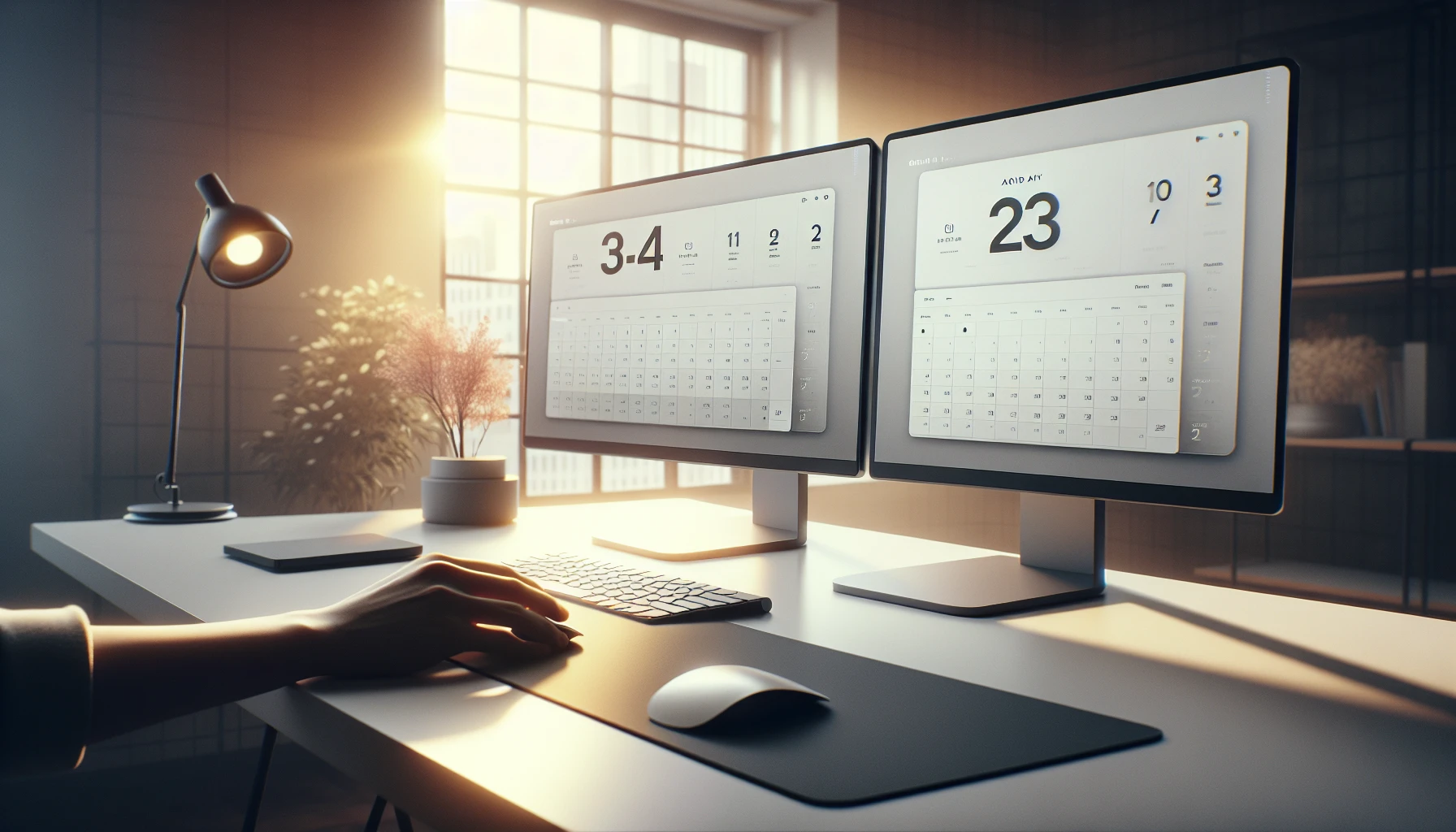· Ricardo Batista · 12 min read
How to personalize meeting alerts for better turnout
Custom meeting alerts with emails, SMS & calendars help cut no-shows, boost attendance and keep busy adults on track - neat, real tips.

Sometimes organizing meetings can become a bit messy, and using personalized reminders saves time and cuts down on no-shows. This article mixes easy tips with practical tools like Calendly and Microsoft Teams, offering real advice and ideas that feel genuine, useful and a tad relaxed in tone while keeping things professional and clear.
Key Takeaways
- Personalized meeting reminders help cut down on no-shows and keep things on track
- Tools like Calendly and Microsoft Teams make it easy to set up email and text alerts
- Our expertise shines when we automatically ping attendees that arrive late to your meetings, keeping everyone in the loop
- Customizing notifications goes a long way in making your schedule smoother and less stressful
- Better communication and a little automation save time and reduce scheduling mix-ups
Introduction to Personalized Meeting Reminders
Personalized meeting reminders help you reach out to your team and attendees in ways that feel natural to them. Even when days are jam-packed, a well-crafted reminder can make sure no one misses out. It’s not just about the dates and times; it’s about building a bridge between scheduling and accountability. If you use automatic pings for attendees who consistently join late, you end up encouraging punctuality without sounding too strict. This approach brings down the chance of missed meetings and boosts overall productivity.
When you add your personal touch to reminders, you not only show you care about their time but also emphasize how important the meeting is for everyone involved. This kind of subtle personalization is a great motivator and helps in maintaining a strong professional relationship, even in the busiest moments.
Why Attendance Matters
Timely attendance is not just a sign of respect; it’s a critical aspect of keeping teams aligned and energetic. When every participant shows up, meetings run efficiently and goals are met faster. With personalized reminders, you can address habitual tardiness or accidental forgetfulness with a tone that best fits the company culture.
- Timely attendance decreases wasted time and resources.
- Personalized hacks ensure that reminders are met with positive responses.
- Automated pings for late arrivals help in creating a proactive meeting environment.
When attendees receive a simple, friendly ping as a reminder, they’re more likely to adjust their schedule appropriately. This method turns what might have been seen as nagging into a supportive push to be on time.
Customization Tools Overview
Customization tools are becoming a staple for businesses that rely on countless meetings under tight deadlines. They help you integrate reminders seamlessly into your digital tools, such as email, SMS, and calendar invitations, ensuring every attendee gets a prompt in their preferred format.
While there’s no one-size-fits-all option, it makes sense to explore how combining different tools can lead to effective solutions. For instance, using a mix of email alerts and SMS notifications gives you that added layer of assurance—a double tap if one falls through.
Customization Tools and Techniques
Email Integration
Email remains a favorite for an initial alert, especially when personalized. With simple steps, you can customize the content that reaches each recipient. Here’s how to go about it:
- Set up a meeting event using your email calendar.
- Ensure that your emails contain clear subject lines, such as “Reminder: Meeting Today at 3 PM – See You There!”
- Use friendly language and include details like the agenda or a personal note.
- Integrate your communications seamlessly with platforms like How To Write A Reminder Email For Meeting.
You can use simple drag-and-drop interfaces provided by several platforms, making it straightforward even if you’re not a tech expert.
SMS Reminders
For those who may not check their emails as frequently, SMS reminders come in handy. SMS messages tend to have higher open rates, ensuring your notification is seen in a timely manner.
- Use concise language to communicate the meeting details.
- Be direct but friendly: “Hey, just a heads-up that your meeting starts in 30 minutes!”
- Incorporate a quick response options, so attendees can confirm or ask for updates.
- Integrate tools like calendar syncs with your mobile platform to automatically send out these texts.
SMS notifications can be especially useful in eliminating last-minute no-shows, as a direct SMS is harder to overlook than an email that might get swamped in an inbox.
Calendar Integrations
Calendar integrations allow your reminders to be set up directly within the software you’re using. Platforms like Google Calendar or Microsoft Outlook provide options to receive notifications on your desktop or mobile device.
- Sync your calendar with scheduling tools.
- Use built-in reminder settings that allow you to customize the timing of notifications.
- Add brief, personalized notes like “Looking forward to our discussion on new project ideas!”
- For Zoom meetings, check out Meeting Reminders For Zoom to see how you can easily embed these tricks.
Calendar integrations are both efficient and user-friendly. These tools not only simplify the notification setup but also automatically handle recurring meetings with minimal manual intervention.
Practical Insights from Key Platforms
Calendly and Microsoft Teams
Leveraging platforms like Calendly and Microsoft Teams gives you a head start when it comes to personalization. Calendly can automate your scheduling, ensuring that every reminder is sent at just the right moment. You can tailor messages based on the recipient’s history with your meetings, such as casual nudges for those who are frequently late.
Similarly, Microsoft Teams offers seamless integration with your business calendar and email system. This means you can set automated pings that trigger when someone is running late, and even include a brief summary of what they’re missing by not being on time promptly. These tools are simple yet incredibly effective in reducing no-shows and keeping the team on track.
Best Practices and Ready-to-use Reminder Templates
Ready-to-use Templates from Asana Forum
If you’re in need of a template to start your journey, the Asana Forum is a rich resource where professionals share their best practices. You’ll find templates that have been tried and tested by teams around the world:
- Simple, friendly reminders that foster a collaborative environment.
- Step-by-step wording that ensures clarity.
- Optional settings for automated follow-ups to those who join late.
Templates often include placeholders for time, personalized greetings, and even dynamic content that adjusts based on the recipient’s role or previous interactions. They’re designed to strike the right balance between formality and friendliness needed in a modern team environment.
WooCommerce Booking for Flexible Scheduling Solutions
For those whose work involves dynamic scheduling, WooCommerce Booking proves its worth by allowing flexible setups. This tool is especially useful if your meeting schedules tend to vary greatly. With it, you can:
- Integrate multiple reminders for different types of meetings.
- Adjust timings based on the nature of the meeting (info session versus deep-dive).
- Automatically trigger reminders when a meeting time is changed.
- Set up late-arrival notifications that ping participants as soon as they join late.
Using WooCommerce Booking ensures that your scheduling system remains fluid, adapting easily to the changes typical in a busy work environment while also minimizing excuses for lateness.
Leveraging External Resource Hubs for Automated Notifications
Automated Notification Techniques
Automating notifications is not a one-trick process. It involves understanding your audience and tailoring reminders accordingly. Here are some techniques to adopt:
- Use machine learning tools that analyze attendance patterns.
- Set short, actionable messages that provide clear instructions on when and how to join.
- Incorporate feedback loops that adjust the reminder schedule if someone repeatedly joins late.
- Experiment with timing offsets – a second reminder 10 minutes before the meeting might be all it takes.
These automated techniques can be enhanced with third-party tools that allow in-depth customization. This is particularly useful for teams that work across different time zones, ensuring that reminders are sent at optimal local times.
Meeting Controls to Cut No-shows
To truly optimize meeting attendance, you must have adequate meeting controls. This involves setting protocols that reduce excuses for being late or missing meetings entirely. Some strategies include:
- Using a “late ping” feature where attendees get a friendly alert if they join after the meeting has started.
- Integrate countdown timers within your online meeting interfaces.
- Offer real-time meeting updates via your communication channels to keep everyone informed.
- Combine notifications with quick links that automatically update the meeting agenda or any pre-meeting materials.
These meeting controls not only ensure that people are aware when they join late but also provide real-time context, making it easier for them to catch up quickly.
Actionable Tips and Quick Examples
Personalizing Your Reminder Messages
Personalize your meeting reminders by addressing your attendees by name and referencing previous interactions. This simple step makes the reminder feel less automated and more like it came from a colleague who cares. Consider these steps:
- Start with a friendly greeting. Instead of “Dear Participant,” try “Hi Alex!”
- Include a short personal note: “I know mornings are hectic, but I’m excited to catch up and share some cool updates.”
- Highlight the meeting’s value: “This meeting will cover key points that can really help streamline our projects.”
- Use conversational language throughout.
Mixing and Matching Strategies
A one-size-fits-all strategy rarely works. Instead, mix and match your tools and techniques based on the context:
- Use email for a detailed reminder where links to resources and attachments are needed.
- Opt for SMS when you need to make sure the note gets immediate attention.
- Rely on calendar integrations to automatically send follow-up pings as the meeting time approaches.
Combining these approaches allows each attendee to receive a reminder in the medium they use most, increasing the chances that your message gets noticed and acted upon. For a detailed guide on reminder emails, you might check out How To Write Reminder Email For Meeting.
Integrating Versatile Tools to Suit Your Business
No business is the same, so your set of tools should be just as diverse. Integrate different software solutions based on the technology your team uses. Popular integrations include:
- Linking scheduling tools like Calendly for efficient time slot management.
- Connecting MS Teams or other video conferencing tools so that reminders include direct join links.
- Using customizable dashboards within your calendar software to track attendance patterns over time.
These integrations not only automate many of the repetitive tasks but also furnish you with data. You can see trends in attendance, tweak your strategies accordingly, and truly understand what works best for your group.
Remember that testing is key. Start with one tool and gradually layer on additional integrations. This gradual approach prevents you from being overwhelmed and allows you to pinpoint which tool contributes most to lowering tardiness rates.
By treating reminders as a dynamic part of your meeting culture, you begin to create an environment where everyone is aware of the meeting’s importance. Experiment with your tone, timing, and even the medium through which the reminder is sent until you find the mix that works best for your team’s unique style.
Whether you’re pinging team members who tend to be just a bit late or setting up an automated chain of notifications, the real trick is adjusting the content and timing based on real-time feedback. For example, you might notice that a quick, casual SMS works best for younger teams, while a detailed email might cater more to a professional, formal setting.
In a world where distractions are many, having tailored reminder strategies can make the difference between a productive meeting and a wasted hour. Be prepared to experiment with building a library of templates, each geared towards different scenarios—late joiners, non-responders, or even enthusiastic early birds who might just need a little extra nudge to get started.
Taking note of how different external tools work together in seamless automation also plays a big role. It not only saves you time but also ensures that your reminders help reduce no-shows and get the best possible start to every meeting. The combination of timely alerts, personalized language, and adaptable templates is the key to maintaining a high level of engagement even when your schedule is bursting at the seams.
By adopting these simple yet effective methods of personalization and combining them with the right tools, you can transform your basic meeting reminders into powerful catalysts for better attendance and engagement. Stay flexible, test different approaches, and always keep the channel of communication open with feedback from your team.
Conclusion
In conclusion, our article has shown that personalized meeting reminders can really boost your attendance and keep everyone on track. The central theme was simple: tailor your meeting alerts using email, SMS and calendar tools to cut down on no-shows. We learned that using tools like Calendly and Microsoft Teams makes it easier to stay organized, and that even simple change in notification style can have a big impact on punctuality. Plus, incorporating automation is a smart move—streamlining the sending of reminders saves time and confusion.
Our guide provided everyday ideas that are both practical and easy to implement, even if things get a little messy sometimes. It also stressed that having a solid communication plan helps keep your team or attendees well informed. If you want to boost your meeting game further, then you should consider letting experts handle it. With Meeting Reminders’s expertise in Automatically ping the attendees that arrive late to your meetings, your next step is pretty clear. Try out our pricing and see how smoother your schedule can become: Meeting Reminders.
Related Posts
Frequently Asked Questions (FAQs)
What are personalized meeting reminders?
Personalized meeting reminders are simple messages you send before your meetings so everyone remembers to join on time. They can come via email, text, or calendar notifications, and help make sure you’re not caught off guard by a busy schedule.
How can I easily set up meeting reminders?
You can set them up using many tools like Calendly or Microsoft Teams which let you schedule and send alerts with just a few clicks. The idea is to connect your calendar and let the app do the work for you, reminder by reminder.
Do meeting reminders work for different types of events?
Yes, they work for almost any event you plan—work meetings, study groups, or even social hangouts. By customizing the timing and method of notification, you make sure the right people get the right nudge at the right time.
How does Meeting Reminders automatically ping the attendees that arrive late to my meetings?
Meeting Reminders has a cool feature where it automatically sends follow-up messages to attendees as they join late. This keeps everyone in sync without causing too many disturbances. It shows our expertise in streamlining communication while keeping the meeting flow smooth, which is super helpful for fast-paced environments.
Are meeting reminders useful for both professional and personal calendars?
Absolutely they are. Whether you’re juggling work projects or scheduling your personal catch-ups, meeting reminders help keep you organized. They reduce the chance of overlapping events and keep you updated on what’s coming next, making everyday scheduling a lot less stressful.



